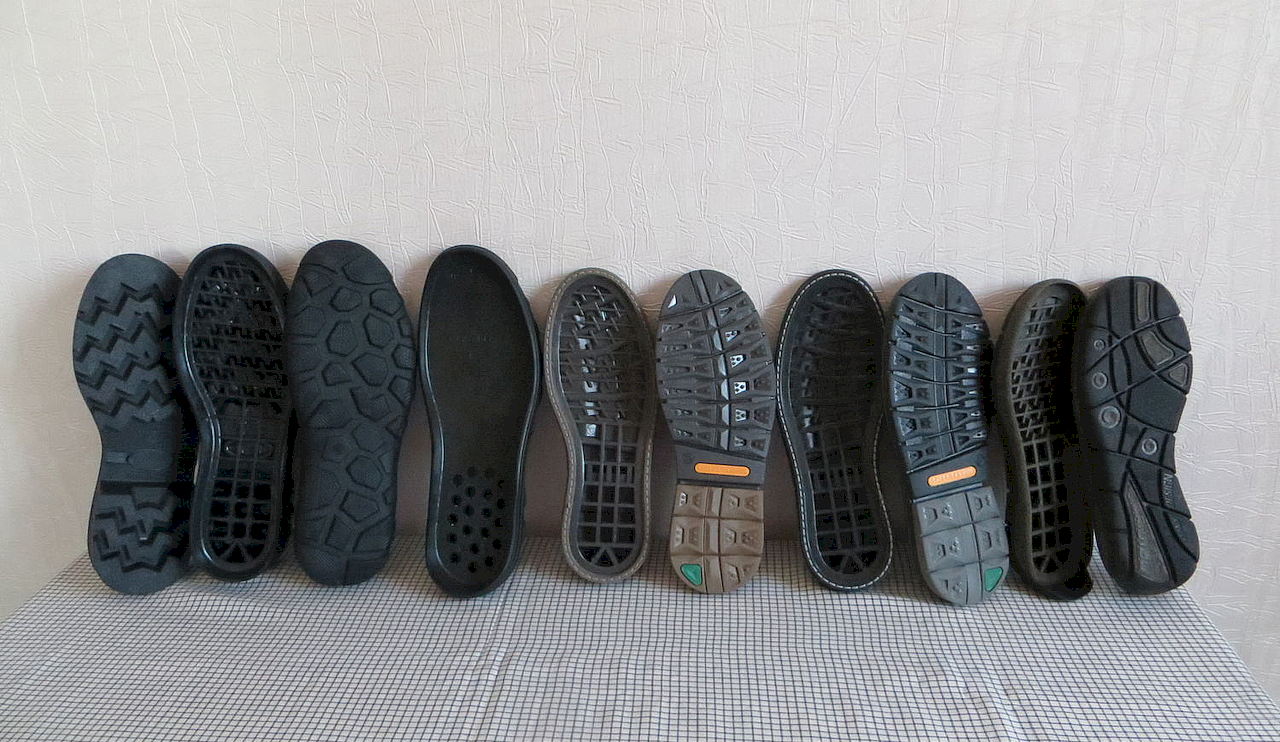When buying, first of all, pay attention to the material of the upper of the shoe and rarely to the sole. But in vain, because it is on it that the greatest load is placed, and on both sides. We invite you to familiarize yourself with the most popular materials from which it is made.
What are shoe soles made of?
Let's consider the positive and negative qualities of materials, as well as their features.

Leather
Perhaps it occupies one of the leading places in terms of its prevalence. It looks beautiful and allows the foot to “breathe”.
But she also has her shortcomings. The quality of leather soles may decrease due to increased humidity, which means it is not designed for frequent walks in rainy weather. Leather is quite demanding to care for and is not very resistant to wear.
Reference. That is why such material requires the installation of prevention, especially in winter, in order to reduce the possibility of unexpected slipping.
Tunit
Otherwise it is called “leather fiber” because of its composition - rubber and leather fibers.This is an improved version of the leather sole, which has a much longer service life and is resistant to water. It is easier to apply relief on tunit than on leather, so it adheres better to the surface.
But unfortunately, this does not solve the slip problem 100%, since the material is very hard.
By the way! That is why such a sole is usually not used in making shoes for the winter.
Rubber
This is an excellent material in its qualities, but economically disadvantageous, therefore not often used in mass production. It adheres perfectly to the leather upper and is endowed with excellent strength and anti-slip properties, as well as frost resistance.
But such soles are heavy and get dirty easily.

Tree
With the popularization of the environmental movement, this material acquired new fame. Shoes with such soles look stylish and unusual. It can be birch, oak, beech or linden. Manufacturers also like to use balsa wood, but since it is not suitable for the role of a full-fledged sole, it is used for decorative purposes.
The disadvantages of this material are obvious: the wood is hard, easily trampled and deformed when in contact with water. And on soft cork coverings, chips and other damage appear quite quickly.
TPU
Stands for "thermopolyurethane". It is usually used to create soles with deep treads that have excellent traction even on the slipperiest roads. They are not afraid of cuts or punctures, and have the highest resistance to wear.
But this stuff not very plastic and does not retain heat well. In addition, it is quite heavy.
PU
Polyurethane, unlike the previous version, is much lighter and more flexible.It is characterized by flexibility, as well as good shock-absorbing and thermal insulation properties.
However, at temperature below 20 degrees polyurethane “woodens”, that is, it noticeably reduces ductility, as a result of which cracks may appear. Plus, he glides on ice.
TEP
This abbreviation stands for “thermoplastic elastomer”. This is a universal material that can be used for any season. It has strength, elasticity, as well as frost and wear resistance.
Reference. Its main feature is its two-layer nature. The bottom layer is harder, it strengthens the sole. The upper one is porous, retaining heat.
In addition, this material is one of the most environmentally friendly.
Thermoplastic elastomer has practically no disadvantages. The only thing is that it is used only as part of everyday shoes, since cannot tolerate extreme temperatures.
PVC
Aka polyvinyl chloride. Most often in demand for shoes for children, as well as for home use. It has a long service life without abrasion and can withstand harsh environments.
However, in addition to his weight and low cold resistance, PVC sole is poorly attached to the top.

EVA
Stands for "ethylene vinyl acetate". This is a record holder for lightness, which, among other things, has excellent shock absorption. It is popular in the manufacture of shoes for children and at home, summer sandals and slippers, and as inserts in shoes for sports.
Unfortunately, over time, shoes with EVA soles become less cushioned. This material is not suitable for winter shoes, because not resistant to frost and slips on ice.
TPR
This is a material that is known as thermoplastic rubber. Its properties are similar to those of natural rubber, but it benefits from elasticity.
TPR weighs little, does not allow water to pass through and retains heat well. However, this cannot be called an alternative to other heat-saving soles due to its low density.
It's up to you to choose which material is best. It all depends primarily on the purpose of use and the season.


 0
0





